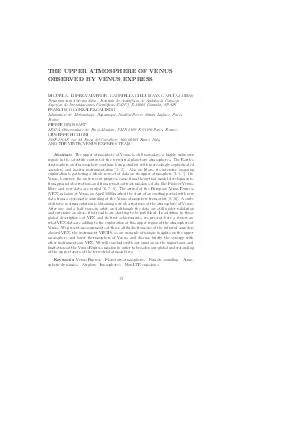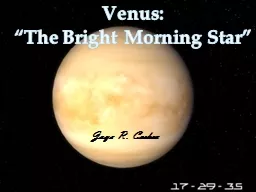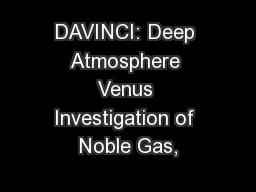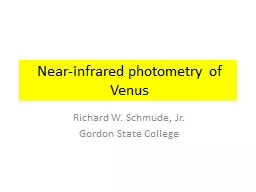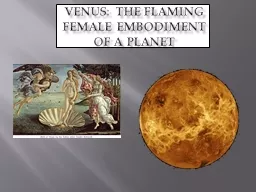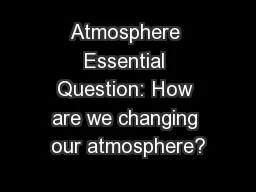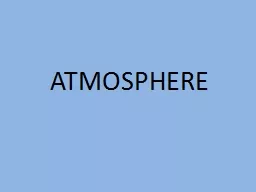PDF-THE UPPER ATMOSPHERE OF VENUS OBSERVED BY VENUS EXPRESS MIGUEL A
Author : debby-jeon | Published Date : 2014-12-25
L OPEZVALVERDE GABRIELLA GILLI MAYA GARC IACOMAS Departamento Sistema Solar Instituto de Astrof57524305sica de A ndaluc57524305aConsejo Superior de Investigaciones
Presentation Embed Code
Download Presentation
Download Presentation The PPT/PDF document "THE UPPER ATMOSPHERE OF VENUS OBSERVED B..." is the property of its rightful owner. Permission is granted to download and print the materials on this website for personal, non-commercial use only, and to display it on your personal computer provided you do not modify the materials and that you retain all copyright notices contained in the materials. By downloading content from our website, you accept the terms of this agreement.
THE UPPER ATMOSPHERE OF VENUS OBSERVED BY VENUS EXPRESS MIGUEL A: Transcript
Download Rules Of Document
"THE UPPER ATMOSPHERE OF VENUS OBSERVED BY VENUS EXPRESS MIGUEL A"The content belongs to its owner. You may download and print it for personal use, without modification, and keep all copyright notices. By downloading, you agree to these terms.
Related Documents

